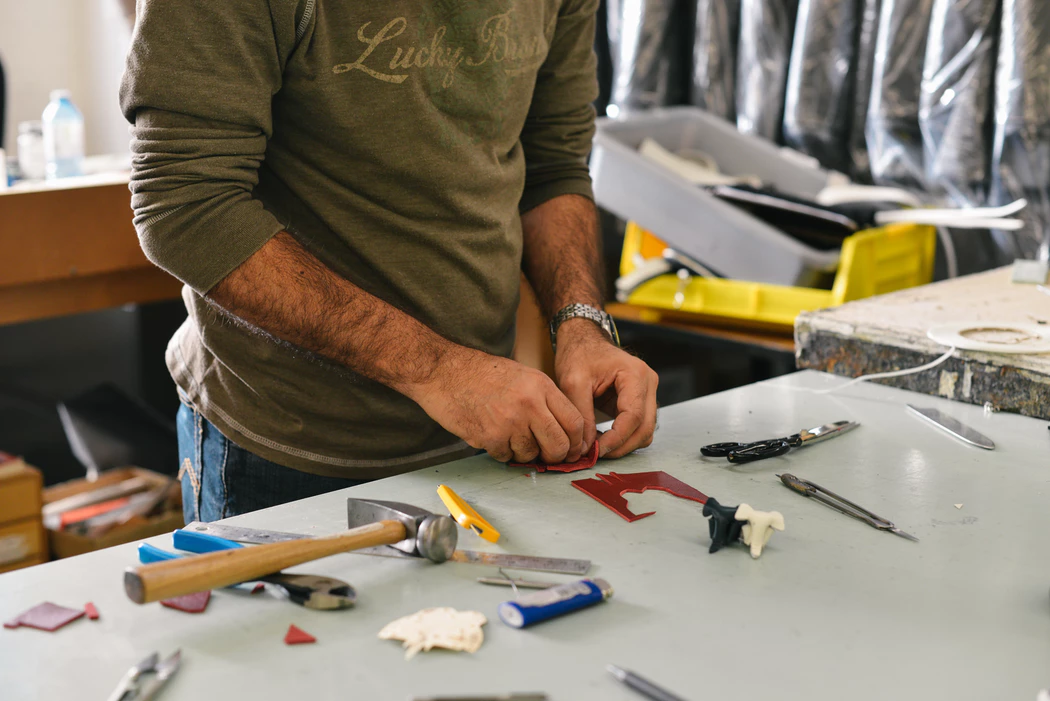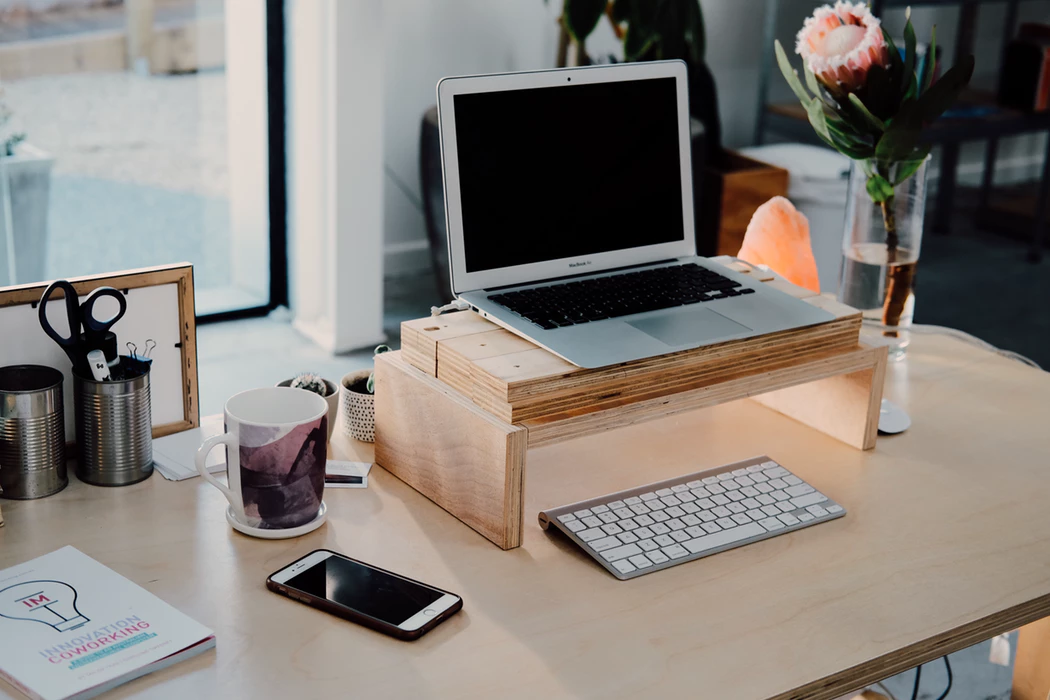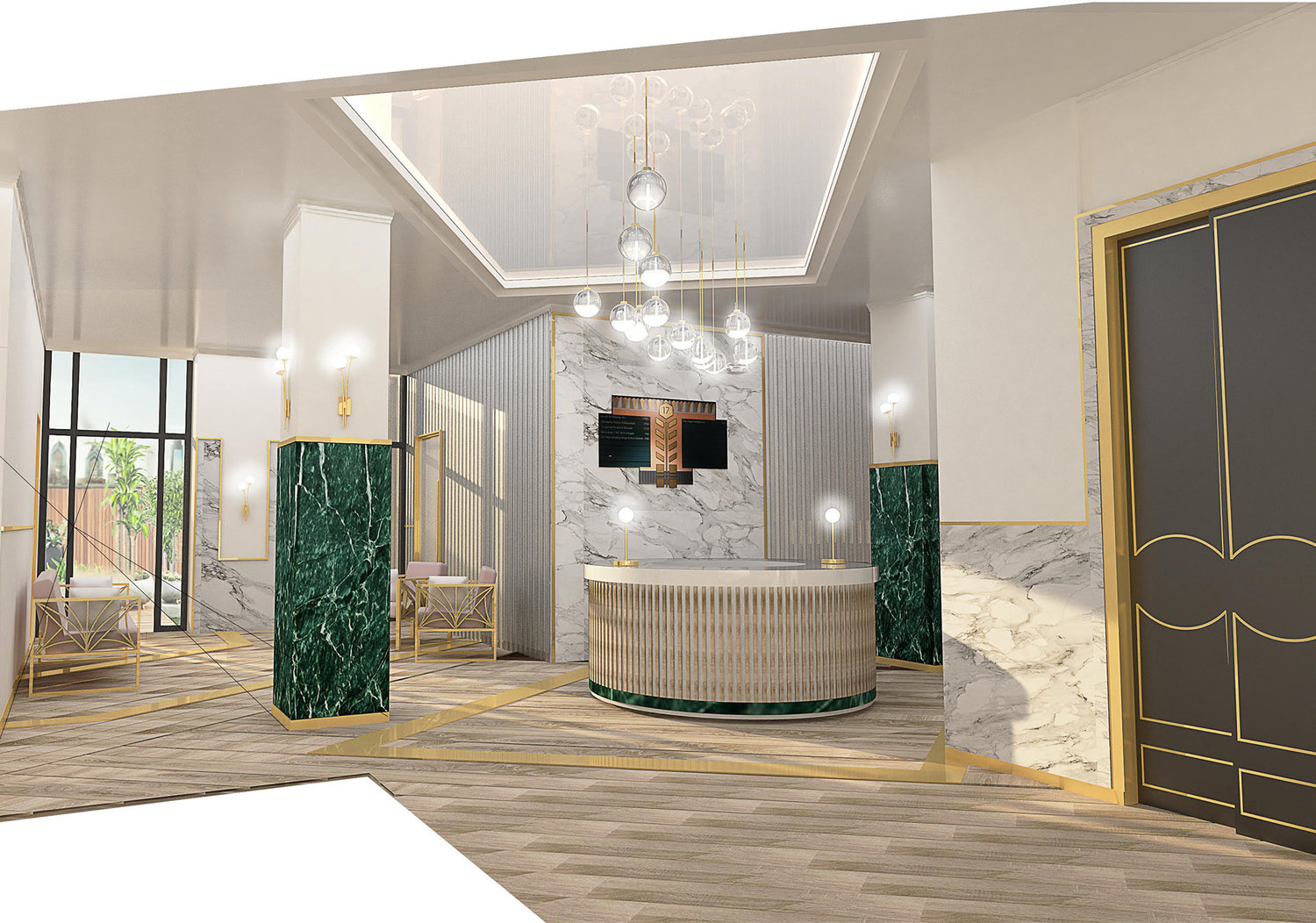By Bond Collective Staff
Used correctly, a standing desk is a healthy alternative to the seated work life you’re familiar with in your office. But standing desks aren’t the panacea everyone claims them to be. While they offer many benefits, standing desks also come with a list of risks.
Before you spend your hard-earned money on a standing desk, learn all you can about the benefits and risks of standing at work.
Types Of Standing Desks
Although standing desks are available in a variety of shapes and sizes, they fall into two basic categories:
-
Static
-
Adjustable
The majority of the standing desk options on the market today fall into the latter category, but you can still find some unique solutions in the former.
Static
The most basic type of standing desk is the static, or fixed, standing desk. A static standing desk sits at a single height — you cannot adjust it up or down more than a few inches — and is appropriate for most adults.
Unlike adjustable-height standing desks, you cannot use a static standing desk as a seated workstation. You can, however, combine a static standing desk with specially designed exercise equipment — such as a treadmill, an exercise bike, or a stair-stepper — for a unique move-while-you-work solution.
Static standing desks are typically cheaper than adjustable varieties. But if you’re not working from a laptop or tablet, they do require a second computer system. They also take up more floor space overall since you’ll need both the static standing desk as well as a seated desk so your employees can alternate between the two.
Adjustable
Adjustable-height standing desks come in a variety of types. The three most common are:
-
Sit-to-stand adapters for your regular desk
-
Manually adjustable sit-to-stand desk
-
Powered sit-to-stand desk
The sit-to-stand adapter option fits nicely on most desks and gives you the ability to change the height of your monitor and keyboard to accommodate seated or standing work. With these adapters, you can usually only set the surface to one or two heights, so they’re not as flexible as the other adjustable-height varieties.
The other two options — manually adjusted and powered sit-to-stand desks — give you the ability to adjust the entire desk surface up or down through a range of two feet or more. That means you can set the work surface — either by turning a crank or pressing a button — at any height between 24 inches off the ground (for sitting) to 50 inches off the ground (for standing).
Adjustable-height standing desks are quite a bit more expensive than their static cousins and range in price from as low as $800 to as high as $2,000 or more.
If space is an issue in your work environment, these types of standing desks are the better solution because you don’t need a regular desk and a static standing desk. One piece of furniture does both.
The Benefits Of A Standing Desk
1) Lowered Risk Of Heart Disease
A sedentary lifestyle — like the one most seated office workers have — increases your risk of heart disease by as much as 90 percent. Similarly, sitting uninterrupted for hours at a time increases the risk of cardiovascular events (e.g., heart attack, atherosclerosis) by 147 percent.
The simple act of changing from sitting to standing (and moving more every day) removes those risks entirely.
2) Lowered Risk Of Weight Gain, Obesity, And Type 2 Diabetes
When you sit for prolonged periods of time, your body relies more and more on the chair, so your muscles relax. When you stand, you activate those same muscles to keep your body balanced and upright.
That burns more calories — 50 more calories per hour, in fact.
So if you stand for a total of three hours each workday, you burn 150 calories per day. That might not seem like much, but over the course of a week, you burn 750 extra calories. That quickly adds up to 30,000 extra calories every year.
All of that taken together can have a profound effect on potential weight gain (or loss) and your risk for type 2 diabetes.
3) Reduced Back, Shoulder, And Neck Pain
It is basically a given that sitting too much can cause back, shoulder, and neck pain. And this type of pain is one of the most common problems office workers experience throughout their day. Standing with good posture while working can counteract these issues.
4) Improved Mood & Energy
Scientists link a sedentary lifestyle with an increased risk of depression and anxiety. This is likely because when your body feels better (because you aren’t sitting for hours on end), your mood and energy level will improve as well.
That can have a beneficial effect on your engagement, focus, and creativity.
5) Increased Productivity
The boost in engagement, focus, and creativity that results from using a standing desk then leads to an increase in productivity. You’re able to finish tasks more quickly and with much better results than you would if you sat all the time.
The Risks Of A Standing Desk
1) Too Much Of a Good Thing
Doing most activities for excessive lengths of time can be unhealthy, even sleeping. The same can be said of standing. While sitting for seven or eight hours every day has serious repercussions on your physical, mental, and emotional health, standing at work can have similar effects.
That said, the solution shouldn’t be using either a standing desk or a seated desk exclusively but, rather, alternating between a seated and a standing position throughout the day.
2) Discomfort
Standing in one place for more than 30 minutes leads to discomfort — even full-fledged pain — in the joints and connective tissue in your body. Instead of trying to stay still at your standing desk, shift your weight every few minutes and let your body move and sway as the mood strikes you.
3) Muscle Fatigue
Muscle fatigue is another risk of using a standing desk in your work environment. Standing requires tension in the legs, hips, abdomen, and back to keep your body in place. Without practice, your muscles quickly become fatigued when you stand for more than 30 minutes.
If you’re just starting out with a standing desk, sit for 20 minutes and then stand for five minutes. Gradually increase your standing time to no more than 30 minutes per hour.
4) Lower-Limb Swelling
When you stand, your circulatory system has to work against gravity just a bit harder than it does when you sit. And with prolonged periods of standing, your body isn’t going to be as efficient as it usually is.
This drop in efficiency leads to blood pooling in your ankles and calves. The result? Swelling and pain in those same body parts.
5) Deterioration Of Reaction Time & Mental State
The risks of standing too much aren’t only physical. Because your body is using more resources to keep itself upright and stationary, over time, it directs fewer nutrients and less blood to your brain.
This allocation of energy to the muscles instead of the brain leads to deterioration of reaction time and overall mental state. It’s worth noting, however, that this deterioration occurs over several hours of standing in one place without moving. It doesn’t happen right away.
How To Use A Standing Desk For Best Results
As we mentioned at the beginning of this article, switching from a seated desk to a standing desk will not cure all of your work-related ills — especially if you jump from sitting all day to standing all day. That’s just a recipe for more problems.
The best way to use a standing desk is to change your position every 30 minutes and to take a 10-minute movement break once an hour.
Here’s an easy routine to try:
-
Stand for 30 minutes
-
Sit for 20 minutes
-
Walk, stretch, or exercise for 10 minutes
You can switch the standing and sitting in this routine, but try not to sit longer than 30 minutes at a stretch. At the 30-minute mark, your metabolism slows by as much as 90 percent and the muscles in your lower body turn off.
The Best Workspace For Any Type Of Desk
At Bond Collective, we know how to design an office your whole team will love, whether you prefer to sit or stand while you work. So if you’re looking for a workspace that will increase your team’s productivity, consider becoming a member of Bond Collective.
Take advantage of our coworking spaces, dedicated desks, and private offices to suit all your business needs. When you work at Bond Collective, you’ll be surrounded by everything you need to take your teamwork to the next level.
Come see our gorgeous office spaces in New York (55 Broadway, 60 Broad, Gowanus, Flatiron, and Bushwick) and Philadelphia (The Station House).
To learn more about the advantages of coworking spaces for digital nomads, remote workers, and businesses of all kinds, visit BondCollective.com today.






